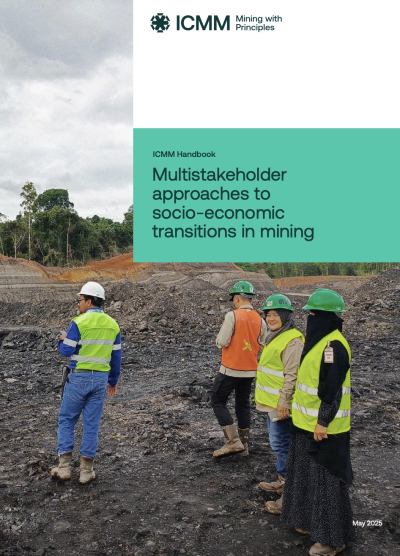
- Report year:2025
- Organisation: ICMM
Socio-economic transitions in mining regions are complex—myriad factors determine whether communities can sustainably transition to a post-mining economy and prosper through change. Many of these factors cannot be controlled or managed by mining companies. Rather than tackle each challenge in isolation, multistakeholder and multidisciplinary approaches can turn barriers into long-term, positive legacies.
This handbook presents nine multistakeholder approaches that mining companies and external stakeholders can apply to support socio-economic transitions and build community resilience. It explores:
- The core factors that influence the success of socio-economic transitions.
- The value of multistakeholder approaches, the roles mining companies can play, and what makes these approaches effective.
- Nine distinct types of multistakeholder approaches—explaining how they work in practice, where they fit within the mining lifecycle, the roles of companies, prerequisites for success, potential limitations, good practices, and more.
- A series of case studies illustrating each approach in action.
- Eleven practical tools to support the application of these approaches in real-world settings.
This handbook presents nine multistakeholder approaches that mining companies and external stakeholders can apply to support socio-economic transitions and build community resilience. It explores:
- The core factors that influence the success of socio-economic transitions.
- The value of multistakeholder approaches, the roles mining companies can play, and what makes these approaches effective.
- Nine distinct types of multistakeholder approaches—explaining how they work in practice, where they fit within the mining lifecycle, the roles of companies, prerequisites for success, potential limitations, good practices, and more.
- A series of case studies illustrating each approach in action.
- Eleven practical tools to support the application of these approaches in real-world settings.
